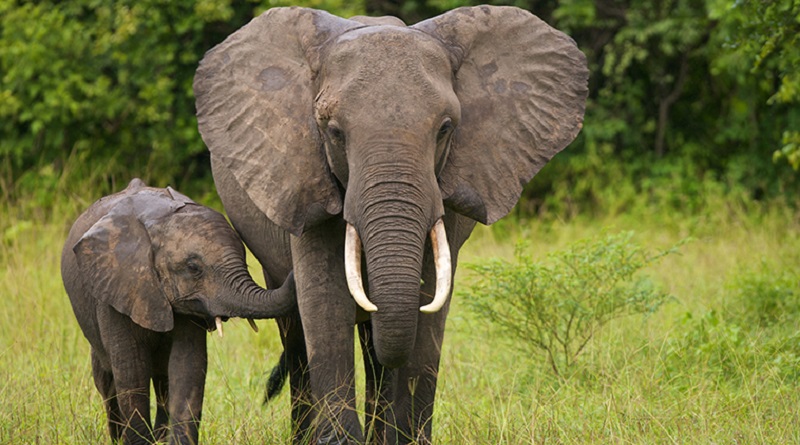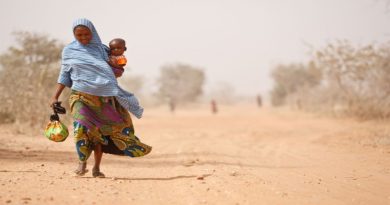Human-wildlife conflict one of the greatest threats to wildlife species -report
Conflict between people and animals, from China’s famed wandering elephants raiding farms for food and water to wolves preying on cattle in Idaho is one of the main threats to the long-term survival of some of the world’s most emblematic species, warns a new report from WWF and the UN Environment Programme (UNEP), released on 8 Thursday 2021.
Human-wildlife conflict – when struggles arise from people and animals coming into contact – often leads to people killing animals in self-defence, or as pre-emptive or retaliatory killings, which can drive species to extinction.
The report, A future for all – the need for human-wildlife coexistence, highlights that globally, conflict-related killing affects more than 75% of the world’s wild cat species, as well as many other terrestrial and marine carnivore species such as polar bears and Mediterranean monk seals, and large herbivores such as elephants.
“Within a human lifetime, we have already seen extraordinary and unparalleled changes to our planet. Global wildlife populations have fallen an average of 68 per cent since 1970,” says Margaret Kinnaird, Global Wildlife Practice Leader at WWF International. “Human-wildlife conflict, in combination with other threats, has driven significant decline of species that were once abundant, and species that are naturally less abundant have been pushed to the brink of extinction. Unless urgent action is taken, this devastating trend will only worsen, wreaking detrimental and, in some cases, irreversible impacts on ecosystems and biodiversity.”
The report featured contributions from 155 experts from 40 organisations based in 27 countries.
“This report is a clarion call to elevate the problem of human wildlife conflict and give it the attention it deserves in national and international processes,” says Susan Gardner, Director of UNEP’s Ecosystems Division.
“It is a call for the adoption of approaches that identify and address the deeper, underlying causes of conflict while developing systemic solutions with affected communities as active and equal participants in the process. As demonstrated in many of the case studies in this report, coexistence is both possible and attainable.”
According to the report, which featured contributions from 155 experts from 40 organisations based in 27 countries, human-wildlife conflict is as much a development and humanitarian issue as it is a conservation concern, affecting the income of farmers, herders, artisanal fishers, and Indigenous peoples, particularly those living in poverty. It also interferes with access to water for communities competing with wildlife for local water sources and drives inequality as those who pay the price for living with wildlife rarely receive the benefits of coexistence.
Despite being so strongly linked to the Sustainable Development Goals (SDGs)*, human-wildlife conflict continues to be overlooked by policymakers.
While people the world over reap the benefits of maintaining flourishing wildlife populations – healthy ecosystems that allow us to survive, provide food and enable livelihoods – catastrophic impacts such as injury and death and the loss of property and livelihoods place a strain on those who live alongside wildlife, often in developing nations rich in biodiversity, leading to financial insecurity and poor physical and mental health.
“If human-wildlife conflict is not adequately addressed by the international community, WWF believes it will have a considerable negative impact on countries’ ability to meet the majority of the SDGs,” says Dr Kinnaird. “If the world is to have a chance of meeting the SDGs by the 2030 deadline, human-wildlife conflict must be explicitly included in SDG implementation plans, as well as at the heart of the Convention on Biodiversity’s new framework.”
The report says that completely eradicating human-wildlife conflict is not possible but that well-planned, integrated approaches to managing it can reduce conflicts and lead to a form of coexistence between people and animals. Such approaches require work on prevention, mitigation, response, research and monitoring all backed by strong policy support and the participation of local communities.
An example of this can be seen in the Kavango Zambezi Transfrontier Conservation Area in Southern Africa, where an integrated approach to managing human-wildlife conflict has led to a 95% reduction in livestock killings, resulting in zero retaliatory killings[2] of lions in 2016 (at least 17 were killed in 2012 and 2013) and allowing previously threatened lion populations to recover.
Reducing human-wildlife conflict in this way can lead to opportunities and benefits not only for biodiversity and impacted communities, but for society, sustainable development, production, and the global economy at large.
The report says that people who have never witnessed human-wildlife conflict can still play their part in combating the problem by looking out for products certified by organizations like the Wildlife Friendly Enterprise Network and the Rainforest Alliance.




